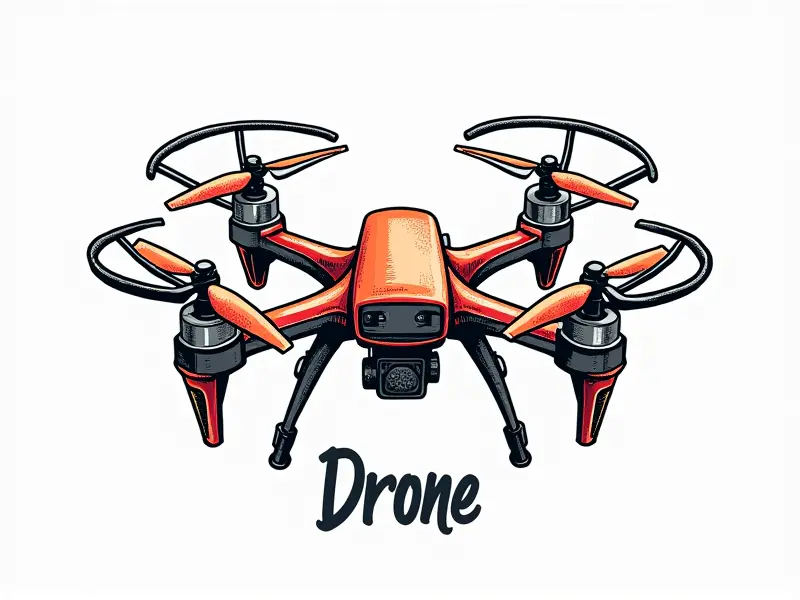Drone not taking off, why?

Why Isn't My Drone Taking Off?
If you're a drone enthusiast, there's nothing more frustrating than your quadcopter refusing to lift off. Whether it’s a beginner model or an advanced FPV racing drone, understanding why your drone won’t take flight is crucial for troubleshooting and ensuring safe operation.
Common Reasons Your Drone Won't Lift Off
The reasons behind a drone failing to launch can vary widely. Here are some of the most common issues:
- Battery Issues: Low or improperly charged batteries can prevent your drone from taking off.
- Propeller Damage: Damaged, loose, or incorrectly installed propellers can hinder lift-off.
- Software Glitches: Firmware updates or software errors can cause the drone to malfunction during takeoff.
- Sensor Malfunctions: GPS and compass issues can prevent your drone from stabilizing properly for flight.
Troubleshooting: Drone Won't Take Flight
To resolve these issues, follow a systematic approach to troubleshooting:
- Check Battery Levels: Ensure all batteries are fully charged and installed correctly. Replace any faulty or low-capacity batteries.
- Inspect Propellers: Check for damage, loose connections, or incorrect installation of propellers. Tighten them securely if necessary.
- Update Firmware: Ensure your drone’s firmware is up-to-date and perform a factory reset if needed.
- Calibrate Sensors: Calibrate the GPS and compass to ensure accurate positioning during flight.
What Keeps My Quadcopter Grounded?
A quadcopter can be grounded by several factors, including environmental conditions and user error. Here are some key points to consider:
- Wind Conditions: Strong winds can make it difficult for a drone to take off or maintain stability.
- Magnetic Interference: Nearby metal objects or magnetic fields can disrupt the compass and GPS sensors.
- User Error: Incorrect settings, such as altitude lock or heading lock, can prevent proper lift-off.
Why Does My FPV Racing Drone Refuse to Fly?
FPV racing drones are highly sensitive and require precise calibration. Here’s how to address common issues:
- ESC Calibration: Ensure Electronic Speed Controllers (ESCs) are properly calibrated for optimal performance.
- Battery Capacity: High-performance FPV racing drones need high-capacity batteries to handle the power demands.
- Propeller Balance: Imbalanced propellers can cause instability and prevent takeoff. Use a balancing tool if necessary.
Solving Problems with a Stuck Drone
If your drone is stuck on the ground, follow these steps to resolve the issue:
- Check for Obstructions: Ensure there are no physical obstructions preventing lift-off.
- Reset Flight Controller: Perform a hard reset of the flight controller to clear any software glitches.
- Re-calibrate Motors: Re-calibrate motor RPM settings to ensure proper balance and power distribution.
Top 5 Problems Preventing Drone Takeoff
The top issues that prevent drones from taking off include:
- Battery Power: Insufficient or poorly maintained batteries can cause a drone to fail to launch.
- Sensor Calibration: Inaccurate GPS and compass readings due to lack of calibration.
- User Settings: Incorrectly configured settings such as altitude lock or heading lock.
- Mechanical Issues: Damaged propellers, loose screws, or other mechanical malfunctions.
- Firmware Updates: Outdated firmware can lead to software errors during takeoff.
Quick Fixes for Drones That Won't Lift Off
Here are some quick fixes you can try when your drone refuses to fly:
- Charge Batteries: Fully charge all batteries and ensure they're installed correctly.
- Tighten Propellers: Check for loose propellers and tighten them securely.
- Reset Settings: Reset any user settings that may be interfering with takeoff.
- Check Environment: Ensure there are no environmental factors, such as strong winds or magnetic interference, affecting the drone.
Debugging: Drone Not Responding at Launch
If your drone is not responding during launch, consider these debugging steps:
- Check for Error Messages: Look for any error messages displayed on the controller or mobile app.
- Review Logs: Check flight logs to identify any patterns of malfunction leading up to takeoff failure.
- Test Individual Components: Test each component separately, such as propellers and ESCs, to isolate faulty parts.
Troubleshooting: Drone Won't Lift Off
To effectively troubleshoot a drone that won’t lift off, follow these steps:
- Start with Basics: Ensure all batteries are charged and propellers are installed correctly.
- Check for Firmware Updates: Make sure your firmware is up-to-date to avoid software errors.
- Calibrate Sensors: Calibrate GPS, compass, and other sensors for accurate positioning.
Why Does My Drone Fail to Launch?
The reasons behind a drone failing to launch can be varied. Here are some key factors to investigate:
- Battery Capacity: Ensure batteries have sufficient capacity and charge level.
- Mechanical Integrity: Check for any mechanical issues such as loose screws or damaged propellers.
- Firmware Compatibility: Verify that your firmware is compatible with the drone model.
Conclusion
Understanding why your drone isn’t taking off and knowing how to troubleshoot effectively can save you a lot of frustration. By following these steps, you can identify and resolve common issues such as battery problems, propeller damage, software glitches, and environmental factors. Regular maintenance and calibration are key to ensuring your drone operates smoothly and safely.

